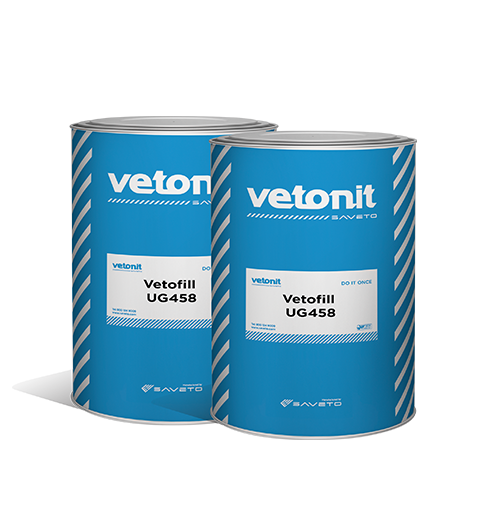Vetofill UG458 is two-component, high performance, bacteriostatic, solvent free, polyurethane grout. It is designed for virtually all residential and commercial installations and offers optimum performance on the most demanding exterior or interior applications. Vetofill UG458 is a fast setting suitable for joints from 1 to 15 mm wide on floors, walls, or pools, etc.

The joints must be dry, clean, free from dust and empty down to at least 2/3 of the thickness of the tiles. Any adhesive or mortar which has seeped into the joints while laying the tiles must be removed while still fresh. Before grouting, make sure the installation mortar or adhesive has set and that most of the moisture has evaporated.
Pour the hardener (component B) into the container of the base (component A) and mix well until a smooth paste is obtained. We recommend using a low-speed electric mixer to guarantee perfect blending, and to avoid overheating of the mix which would reduce the workability time. Use the mix within 45 minutes of preparation.
Apply the product with a rubber spatula, directing across the joints, to remove the excess of the grout, hold the spatula at a 90° angle and pull it diagonally across the joints. Wait for the grout to partially dry (become opaque in about 10- 15 minutes) and proceed with the final cleaning of the tile’s surface using a wet sponge and rinsing it frequently. The total cleaning can be done the next day with a dry cloth. When the grout is still soft, cleaning too early may remove some of the grout from the joints and may cause color variation. It is recommended to apply in small enough areas to grout and clean before the grout dries out too much.
After grouting floor and wall coverings must be cleaned while the grout is still fresh. Wet the grouted surface and emulsify with a sponge. Take care not to drag grout from the joint. The sponge must be saturated with water when cleaning coverings. The liquid residual may be removed with the same sponge. which must be replaced when it becomes too impregnated with resin, and the same technique may be used when finishing off the grouted joints. The use of an abrasive pad instead of the traditional sponge for cleaning joints is recommended in case of tiles with a particularly rough or irregular surface. The liquid residual may in any case be removed with the cellulose sponge.